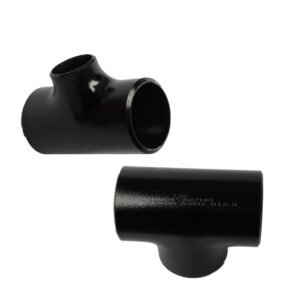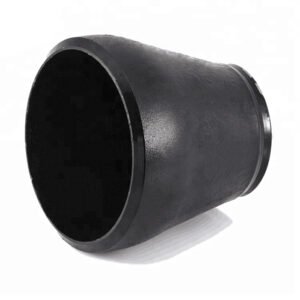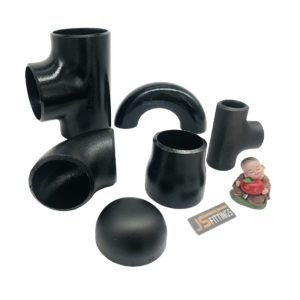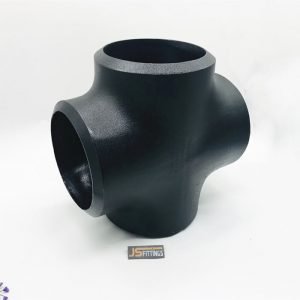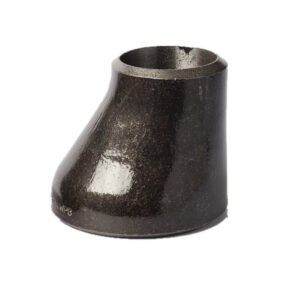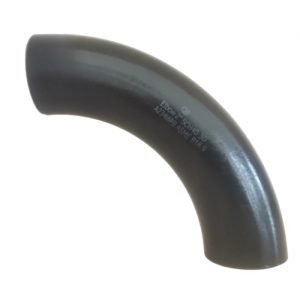When it comes to the world of piping systems, the devil is in the details—or in this case, the fittings. Whether you’re in the petrochemical, pharmaceutical, or food processing industry, the type of fittings you choose can make or break your system. Today, we’re focusing on one of the most robust and reliable types of fittings: butt weld pipe fittings.
What Are Butt Weld Fittings?
Butt weld pipe fittings are an important part of an industrial piping system to change direction, branch off, or to mechanically join equipment to the system.
Buttweld pipe fittings comprise buttweld elbows, pipe reducers, eccentric reducers, tees, and cross, pipe bends etc.
Butt weld pipe fitting has ends in beveled or plain, dimensions normally from 3/4” to 24”. Manufactured according to ASME B16.9. Material in carbon, alloy, and stainless steel.
More butt weld pipe fittings type, please click here.
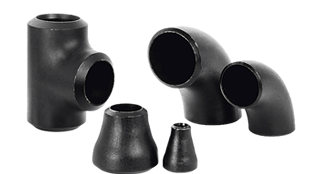
Why Choose Butt Weld Over Socket Weld Fittings?
Butt welded Pipe fittings offer many advantages compared to threaded and socket weld fittings.
Some of the benefits of weld fittings are;
- Welded connection offers more robust connection
- Continuous metal structure adds to the strength of the piping system
- Butt-weld fittings with matching pipe schedules, offers seamless flow inside the pipe. A full penetration weld and properly fitted LR 90 Elbow, Reducer, Concentric reducer etc. offers gradual transition via welded pipe fitting.
- All buttweld pipe fittings have beveled ends as per ASME B16.25 standard. This helps create full penetration weld without any extra preparation needed for the butt weld fitting.
On the other hand, socket weld fittings are easier to install but may not be suitable for corrosive fluid service due to crevice corrosion.
Factors to Consider While Selecting Butt Weld Fittings
- Industry Codes and Standards: Always refer to applicable industry codes and standards like ASME B31.3 for process piping.
- Material and Wall Thickness: Thicker-walled pipes or fittings may require a larger beveling angle or double bevel to ensure proper penetration and fusion.
- Operating Conditions: Evaluate the pressure, temperature, and corrosiveness of your application.
- Cost: While butt weld fittings may initially be more expensive, their long-term benefits often outweigh the initial cost.
Butt Welded Pipe Fittings Dimensions refer to pipe size standards ANSI B36.10 and B36.19.
Diameter range: 1″, 2″, 3″, 4″, 6″, 8″ and maximum 72″.
Thickness range: Schedule 10, Schedule 40, Schedule 80, XS, XXS, and SCH 160
In the case of mounting dimensions of butt welded fittings, this will include the diameter in NPS and the thickness in the schedule.
Our Supply Range for Butt Weld Pipe Fittings( only some samples)
Standard: ASTM A234, MSS SP-75, ASTM A403, ASTM A420
Types: Elbow, Tee Equal and Reducing, Cap, Concentric/Eccentric Reducer
Size Range: 1/2”, 1”, 2”, 3”, 4”, 6”, 8”, 10”, 12”, 16”, 20” to 48”.
Thickness: SCH 10, SCH 40, SCH 80
Surface Coatings: Black Painted, Varnished, Epoxy Coated, Galvanized.
FAQs
Q: How do I select the right size of welded fittings for my piping system?
Choose welded fittings based on your application’s nominal pipe size (NPS) or outside diameter (OD) of your pipes.
Q: Can welded fittings be disassembled and reused?
Typically, no. They are intended to remain in place permanently.
Q: What are some common industries where welded fittings are used?
Industries such as oil and gas, petrochemical, chemical processing, power generation, and water treatment commonly use welded fittings.
Q: If have butt weld fittings in A105 material?
Most common carbon steel buttweld fitting material is A234WPB. It is equivalent to A105 flanges; however there is no such thing as A105 or A106 butt weld fitting.
Q: What can I do if I forget to mention the pipe schedule?
Buttweld fittings are sold as per pipe size but pipe schedule must be specified to match the ID of the fitting to the ID of the pipe. If no schedule is mentioned, we will assume a standard wall is requested.
Q: Differentiate between SCH 40 & True Schedule 40?
Pipe fittings 12 inch or larger require specifying if fthe itting is standard wall (most commonly referred to as sch 40) or a true schedule 40 is required. This is needed since schedule 40 does NOT correspond to standard wall for pipe sizes 12” and bigger. A true sch 40 will be thicker than standard wall for pipe fittings 12” or bigger.
Q: welded or seamless butt weld fitting?
Butt weld fittings are available in both welded and seamless configurations. A seamless butt weld carbon steel or stainless steel fitting is made of seamless pipe and is generally more expensive. Seamless pipe fitting is NOT common in sizes bigger than 12”. Welded pipe fittings are made of ERW welded carbon steel or stainless steel pipe. They are available in sizes ½” to 72” and are more affordable than seamless fittings
Q: What is a 3R or 3D elbow pipe fitting?
First, the term 3R or 3D are used synonymously. A 3R butt weld elbow has a bending radius that is 3 times the nominal pipe size. A 3R elbow is smoother than SR or LR fitting.
We offer Adequate and stable steel pipe fittings, flanges, and steel pipes supply to active engineering trading and stockists.
Welcome to the Steel Pipe Fitting Engineering and Supply Company-Rayoung, and you can contact us if you have any questions.
We are Your Responsible Supplier Partner for Oil & Gas & Chemical Products.
Butt Weld Pipe Fittings And Flanges Manufacturer Since 1983.

